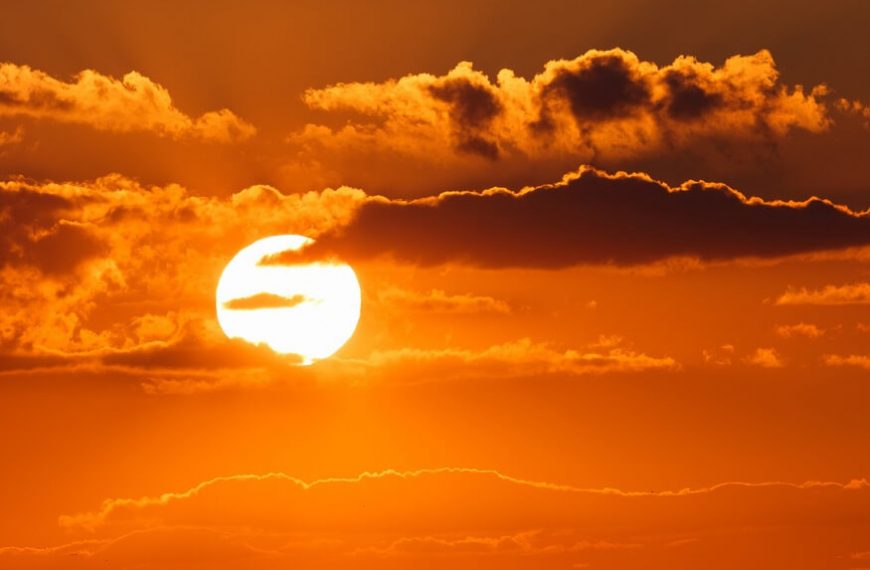Young children often learn about the Sun and its interesting facts, like how the Sun is big enough to fit a million earths inside it, how its surface is blistering at 9,932 degrees Fahrenheit, and how the Sun is about 4.5 billion years old, from their teachers or parents. While these facts are fascinating, there is another important fact that often gets overlooked—why the Sun is considered a renewable resource. In this article, we will discuss about the Sun and why it is considered as a renewable resource. But first, let’s look at what a renewable resource is.
What is a Renewable Resource
A renewable resource is a natural resource that can be replenished or regenerated naturally over time. Renewable resources are often critical for maintaining ecological balance and are considered environmentally friendly. Solar energy (from the Sun), wind energy (from the wind), water (from water), and geothermal (from the Earth’s surface) are some of the examples of renewable resources.
Examples of Renewable Energy Sources
Now that you know about what renewable resource is, let’s look at the different examples of renewable energy sources.
- Solar Power: It captures the Sun’s energy through solar panels and thermal systems to generate electricity or heat.
- Wind Power: It converts the kinetic energy of moving air into electricity using wind turbines.
- Hydropower: It harnesses the energy of flowing or falling water, often from rivers or dams, to produce electricity.
- Biomass Energy: It is derived from natural materials like plant waste and animal byproducts, which can be burned or processed into biofuels.
- Geothermal Energy: It uses heat from the Earth’s interior for power generation and heating applications.
These renewable energy sources provide clean, sustainable alternatives to fossil fuels, helping to reduce environmental impact and promote a greener future. In the next part of the blog, we will examine solar energy and why the Sun is considered a renewable resource.
Why is the Sun Considered a Renewable Resource
The Sun is considered a renewable resource because it provides a continuous and virtually inexhaustible supply of energy. Besides that, there are other reasons why the Sun is a natural resource. Let’s have a closer look at them.
- Abundance: The Sun provides an abundant and continuous energy source, ensuring that there’s always clean power available for your home. Unlike fossil fuels, solar energy won’t run out, making it a reliable choice for future generations.
- Sustainable and Cost-Effective: Solar power doesn’t deplete natural resources, meaning you’re making an eco-friendly choice that reduces reliance on non renewable energy. Plus, investing in solar panels can lower your electricity bills in the long run.
- Innovative: Thanks to advancements in solar technology, it’s now easier than ever to power your home with renewable energy. Solar panels can provide electricity for everyday use, and solar water heaters can help reduce energy costs.
The Many Uses of The Sun
Now that we know why the Sun is a natural resource, let’s look at some of its uses.
- It is Essential for all Life on Earth
- Helps in the Formation of Clouds, Rain and Winds
- Active Role in Photosynthesis
- Essential to Agriculture
- Natural Fuels
- The Greenhouse Effect
The Sun radiates light and solar energy, which makes life possible on this planet. All living beings on the Earth need Sunlight to grow. In the absence of heat from the Sun, the Earth would freeze.
The Sun evapourates the water present in seas and lakes, forming water vapour. When this water vapour rises in the sky, it cools and condenses, forming clouds.
Meanwhile, the Sun’s varying heat in different parts of the world leads to differences in temperature in some areas. This is how winds are formed. It is with the effect of these very winds that clouds move. When the volume of water in the clouds increases, the air cannot carry it, leading to rainfall.
Sunlight provides all the necessary light and energy that plants need. Plants absorb the Sun’s radiation and convert it into energy through photosynthesis. These plants on land, and even algae in aquatic regions, form the foundation of the food web. Their energy and nutrition are passed on to every other living organism.
Whether it is cultivating land or raising livestock, solar energy plays a huge role in aiding Agricultural processes. Solar techniques, like crop rotation, have increased harvests over the years. The technique of drying food using Sun and Wind has prevented crops from spoiling.
The Earth is home to several natural fuels, such as coal, oil, and natural gas. These originate from dead plants and animals that were buried in the soil. Did you know that the energy in these fuels came from the Sun? We utilise this energy to cook our food and run our vehicles.
One of the earliest greenhouses dates back to 30 C.E. Mind you, this was a time when glass had not yet been invented. It was constructed for the Roman Emperor Tiberius, who wanted to eat cucumbers all year long. By converting Sunlight into heat, greenhouses allow plants to grow out of season and in unfavourable climates.
Interesting Facts About the Sun
To feed your little one’s curiosity, we have shared some interesting facts about the Sun that you can share with your kids.
- Just like the stars you see at night, the Sun is a giant ball of hot gas. It’s the closest star to Earth, which is why it looks so much bigger and brighter.
- The Sun is about 109 times wider than Earth and could fit around 1.3 million Earths inside it! It’s located about 93 million miles (150 million kilometres) away from us.
- The surface of the Sun, called the photosphere, is around 5,500°C (9,932°F). But its core is even hotter, reaching temperatures of about 15 million°C (27 million°F)!
- The Sun produces energy through a process called nuclear fusion, where hydrogen atoms combine to form helium, releasing a tremendous amount of energy in the form of light and heat.
- Sunspots are cooler, darker spots on the Sun’s surface caused by magnetic activity. They can be larger than Earth and often appear in pairs or groups.
- The Sun can have sudden bursts of energy called solar flares, which release a lot of radiation. Prominences are large, bright gas loops extending from the Sun’s surface.
- The Sun is about 4.6 billion years old and is expected to keep shining for another 5 billion years or so before it runs out of fuel.
- The Sun is responsible for day and night on Earth. As our planet rotates, different parts are exposed to the Sun’s light, creating day, while the parts facing away from the Sun experience night.
- Sometimes, particles from the Sun interact with Earth’s magnetic field, creating beautiful light displays called auroras, or the Northern and Southern Lights.
Take Away
Everyone has heard the phrase, “The Sun is a natural resource,” but not everyone understands why. This article has explored the key reasons that make the Sun a vital natural resource, helping you see its role in sustaining life and providing renewable energy. Looking for more interesting information on the solar system that you can share with your kids? Check out our blog, Solar System For Kids: Definition & Facts.
For more insights on your little one’s development, nutrition, health, and learning, check out EuroKids Blogs. Don’t forget to check out EuroKids Preschools—the first step in your child’s learning journey!















